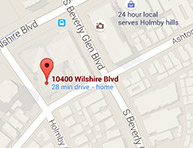Tomorrow marks International Holocaust Remembrance Day. January 27th was chosen as that is the day the Red Army liberated Auschwitz. Yet, one day cannot define the Holocaust.
Honorable Mensch-ion
Communal Darkness
A few weeks ago, we had a blackout. Our entire street was dark. Yet, looking just across the block, the street lights and houses were lit.
Five Cups of Freedom
The Passover seder is famous for the number four.
Nation
When were the Jewish people called am, a nation for the first time? This did not happen by our ancestors, the Israelites, or the Jewish people. Rather, it was Pharaoh who called us a nation for the first time when he recognized that the people before him were too strong for him to bear.
Our Spiritual Selves
At the end of Jacob’s life, he calls his family together and says, “I will tell you what will happen at the End of Days.” Yet, the Midrash tells us the time of redemption was in fact hidden from Jacob. God goes to Jacob and asks, “You gathered your sons and not Me?”
How Sherman, Sinai Responded to Angry Rabbinical Students
An ostensible advantage of leading one of the largest synagogues in Los Angeles, Sinai Temple, is that the outside world tends to monitor what is and is not said during a perceived crisis.
The Ninth Night of Chanukah
In any other year, we would put our Chanukiya away today and tonight we would kindle the Shabbat candles. We know this is not any other year.
We Must Not Despair
Ambassador Michael Oren, author of the new book 2048: The Rejuvenated State, spoke at the closing of the JNF-USA Global Conference in Denver, Colorado. He quoted the first Prime Minister of Israel, David Ben-Gurion, who was a voracious writer in his diary.
This Holiday Season, How Can We Navigate Difficult Conversations?
The season of Thanksgiving is meant to be a time of reunion. At a time wrought with strife, with wars being waged, and intense emotions surrounding those, it may not have been an easy time to come together. For those of us who found this to be the case, the question we are now sitting with is: Where do we go from here?
Thanksgiving Dreams
Do you act upon your dreams? There is a difference between the dreams of Jacob and the dreams of Pharaoh.


